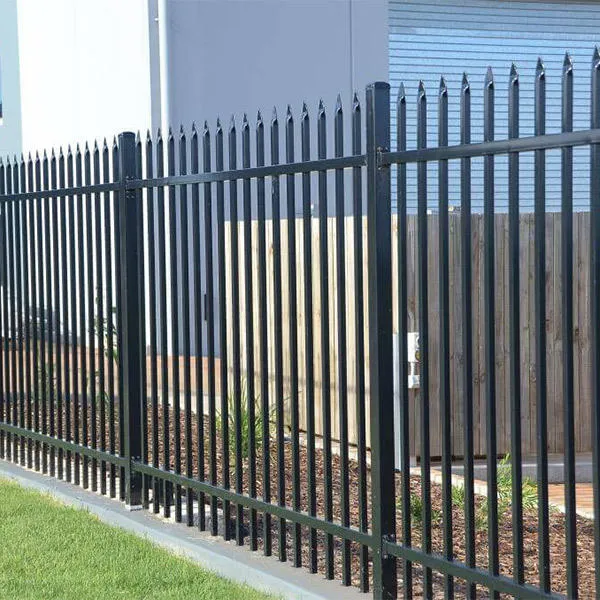ធ្នូ . 18, 2024 02:54 Back to list
welded wire mesh in concrete slab manufacturer
Welded Wire Mesh in Concrete Slabs A Comprehensive Overview
In the realm of construction, ensuring the structural integrity and durability of concrete slabs is paramount. One of the most effective ways to enhance these characteristics is through the incorporation of welded wire mesh. This article delves into the significance of welded wire mesh, its manufacturing process, and its applications in concrete slabs.
What is Welded Wire Mesh?
Welded wire mesh is a grid-like structure composed of steel wires that are welded at intersections. This robust material is often used to reinforce concrete, providing tensile strength that concrete alone typically lacks. Concrete is an excellent compressive material, but it can be quite weak in tension. By integrating welded wire mesh, the overall performance of concrete slabs is significantly improved.
Manufacturing Process
The manufacturing process of welded wire mesh involves several steps. Initially, high-quality steel wire is drawn to the required diameter. Once the wire rods are conditioned and cleaned, they are cut into specified lengths for both longitudinal and cross wires.
Next, these wires are meticulously positioned to create a grid pattern. The intersections are then welded together using automatic welding machines, which apply high heat and pressure to ensure a strong bond. After welding, the mesh is inspected for quality, ensuring that there are no defects or weak points. Finally, the welded wire mesh is either rolled for easy transportation or cut into sheets based on customer requirements.
Benefits of Using Welded Wire Mesh
1. Enhanced Strength One of the primary benefits of welded wire mesh in concrete slabs is its ability to enhance tensile strength. This reinforcement helps prevent cracking and deformation under load.
2. Ease of Handling Welded wire mesh is relatively lightweight and easy to handle compared to other reinforcement methods such as rebar. It can be easily cut and bent to fit specific project requirements.
3. Time-Efficiency The installation of welded wire mesh is faster than traditional reinforcement methods. This reduction in labor time can lead to significant cost savings in large-scale construction projects.
welded wire mesh in concrete slab manufacturer

4. Durability The use of high-quality steel for welded wire mesh ensures that it is resistant to various environmental factors, enhancing the longevity of the concrete slabs.
5. Versatility Welded wire mesh can be utilized for various applications, including floors, pavements, pre-cast concrete products, and even walls. This versatility makes it a popular choice among contractors and builders.
Applications in Concrete Slabs
Welded wire mesh is primarily used in the following scenarios
- Residential and Commercial Floors It is used as reinforcement in concrete floors to support heavy loads, reduce the risk of cracking, and improve overall durability.
- Pavement and Driveways In pavement construction, welded wire mesh aids in distributing loads and preventing cracks due to traffic and weather conditions.
- Pre-cast Concrete Products Manufacturers of pre-cast concrete elements often use welded wire mesh to ensure that their products withstand both pressure and tension during the transportation and installation phases.
- Bridges and Overpasses In larger structures like bridges, the added strength provided by welded wire mesh is essential for maintaining safety and reliability over time.
Conclusion
Welded wire mesh is an invaluable component in the construction industry, providing essential reinforcement for concrete slabs. Its ease of use, versatility, and ability to enhance the structural integrity of concrete make it a go-to solution for builders and manufacturers alike. As construction technologies advance and demands for stronger, more durable materials increase, the importance of welded wire mesh will continue to grow, solidifying its role as a fundamental element in modern construction practices. Whether for residential, commercial, or infrastructural applications, welded wire mesh remains a reliable choice for ensuring the performance and longevity of concrete structures.
-
Durable Welded Wire Mesh for Industry Factory - High Quality
NewsAug.26,2025
-
Leading Galvanized Steel Fence Factory | Durable & Secure Fencing
NewsAug.24,2025
-
Welded Wire Mesh for Industry Factory - Durable & Custom Solutions
NewsAug.23,2025
-
Your Galvanized Steel Fence Factory - Strong, Durable Solutions
NewsAug.22,2025
-
Welded Wire Mesh for Industry: Factory Direct & Custom Solutions
NewsAug.21,2025
-
Welded Wire Mesh for Industry | Factory Direct & Durable Solutions
NewsAug.19,2025

